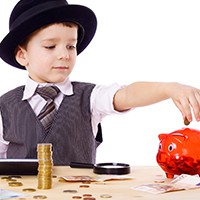Last updated: June 23 2015
Financial Literacy Report Cards: Teaching Top 6 Skills

It’s report card time for kids, but it’s also a good time for parents and teachers to reflect on the level of financial literacy among students, and bringing more effective financial education to next year’s curriculum, which begins just a couple of months from now.
Unfortunately, despite a plethora of free resources available to teachers, there still seems to be considerable resistance to delivering key life skills in the area of financial education.
As a member of the Federal Task Force on Financial Literacy, I have spent significant time reviewing excellent presentations from hundreds of stakeholders. It appears that some progress has been made in developing a greater awareness for the importance of the issue in a modern world. However, there is much work to be done.
Financial education begins with understanding basic financial math, but includes much more to meet the definition of financial literacy: having the knowledge, skills and confidence to make responsible financial decisions.
Here are six practical skills teachers may wish to include in their curriculum next year; readers may wish to weigh in with further suggestions:
- Basic Math: How to add, subtract, multiply and divide in your head so as to understand the best per-unit price of any consumer product you are buying in a retail outlet.
- Percent: What is a percentage? And how to use the concept of per cent and proration in day-to-day life . . . try to explain this to your kids; the concept is more difficult than one may think.
- Recurring Costs: One of the biggest increases in the CPO is the cost of entertainment. Kids and parents alike could benefit from learning how to calculate the annual cost of a recurring expense (such as a cell phone or custom-designed entertainment sites) over a period of 1, 3 and 5 years.
- Adding Interest: Computing the cost of interest (a) on a purchase (b) on investments (c) on a credit card to find the real cost of that pair of shoes or electronic device can be an eye-opener.
- Finding New Money: The real dollar benefit of paying off consumer debt faster is an interesting exercise that shows kids—and their parents—how to free up new money for investment purposes. It’s a great lesson in saving for the future, too.
- Why Save? The benefit of investing rather than spending just got so much brighter with the $10,000 TFSA contribution room. Helping kids to aspire to their first TFSA account is like teaching them how to win the retirement lottery . . . think about it.
Making responsible financial decisions throughout one’s lifetime is as much about having hard numeracy skills as it is about gaining the insight that comes from learning financial behaviors that beget the right results: how to meet your life goals with financial peace of mind.
Consider the following as teachable subjects at home and at school:
- Money and emotion – How would you show your children that emotion can be attached to money, to the detriment of your personal goals?
- Money and responsible choices – what’s a good choice and what’s a bad one?
- Financial decision-making – how do you make a decision about spending and saving money using examples of benefits for the short term and the longer term?
- Consequences of financial behaviors – how do you teach children to recover from financial mistakes or build on great financial decisions?
Summer time is a great time to increase financial literacy and integrate responsible financial behaviors before the mad “back-to-school” spending frenzy. Thinking about this important life skill with more purpose is an important part of growing up . . . no matter how old you are.
In the meantime, kudos to all the fine work teachers do to influence responsible citizenship. Have a wonderful summer!
Evelyn Jacks is President of Knowledge Bureau and author of 51 books on tax and personal financial wealth management.
